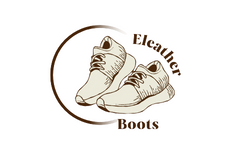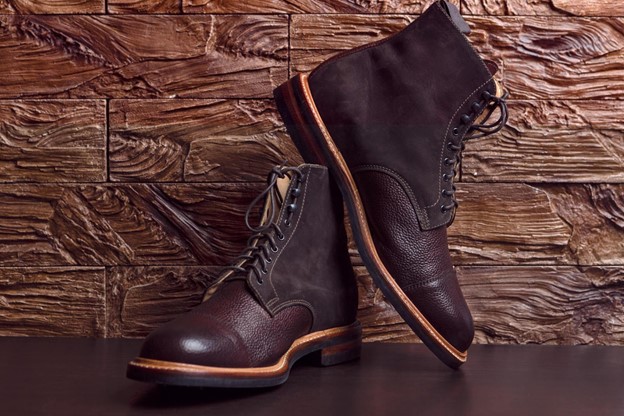Full grain leather boots stand as a timeless fashion staple, renowned for their durability, style, and versatility. Whether you’re trekking through rugged terrain or strutting down city streets, these boots offer both functionality and flair. However, to truly unlock their potential and prolong their lifespan, understanding how to properly waterproof and maintain full grain leather boots is paramount. In this comprehensive guide, we delve into the nuances of full grain leather boots, providing essential tips for waterproofing, maintenance, and addressing common queries.
What are Leather Grain Boots?
Leather grain boots, simply put, are boots crafted from genuine leather that retains its natural grain pattern. Unlike smooth leather, which undergoes heavy processing to achieve a uniform texture, leather grain boots showcase the authentic markings and texture of the animal hide. This lends them a unique charm and character that sets them apart from other types of footwear.
History of Leather Grain Boots
The history of full grain leather boots spans centuries, deeply intertwined with the evolution of human civilization and the necessity for durable and protective footwear. Originating in ancient civilizations like Egypt, Greece, and Rome, the crafting of leather footwear began as a response to the need for protection against rough terrain and harsh weather conditions. Early artisans utilized primitive tools and natural materials to create simple leather sandals and boots, laying the foundation for the craftsmanship that would define full grain leather boots in the centuries to come. As civilizations progressed, so did the techniques of leatherworking, with skilled artisans refining their craft and elevating the quality of full grain leather through meticulous attention to detail.
By the Middle Ages in Europe, the art of leatherworking had become a specialized trade, with cordwainers dedicated to crafting leather footwear of exceptional quality.Today, full grain leather boots remain a symbol of heritage craftsmanship and enduring quality, cherished by adventurers, workers, and fashion enthusiasts alike for their ruggedness, authenticity, and timeless appeal.
The Anatomy of Leather Grain Boots
Leather grain boots are crafted from high-quality leather, renowned for its natural beauty and strength. Understanding the anatomy of these boots is crucial for comprehending their waterproofing needs. From the upper leather to the outsole, each component plays a vital role in both aesthetics and functionality.
The upper leather, sourced from various animal hides, forms the outermost layer of the boot. Its grain pattern and texture contribute to the overall appearance and feel of the footwear. Beneath the upper lies the lining, providing comfort and moisture-wicking properties. Meanwhile, the insole offers cushioning and support, ensuring a comfortable stride. Finally, the outsole, typically made of rubber or leather, provides traction and durability, safeguarding against wear and tear.
Characteristics of Full Grain Leather
Durability
One of the most notable features of full grain leather is its exceptional durability. Unlike other leather types, full grain leather maintains its integrity even after years of use. Its dense fibers make it resistant to wear and tear, ensuring that your leather goods stand the test of time.
Natural Imperfections
Full grain leather proudly displays the natural imperfections of the hide, such as scars, wrinkles, and variations in color. Far from detracting from its beauty, these imperfections add character and uniqueness to each piece, making every item crafted from full grain leather truly one-of-a-kind.
Patina Development
As full grain leather ages, it develops a rich patina that further enhances its appeal. This patina is a result of the leather’s exposure to oils, sunlight, and daily use, giving it a warm, lustrous sheen. Over time, your full grain leather items will acquire a distinct personality, telling the story of their journey alongside you.
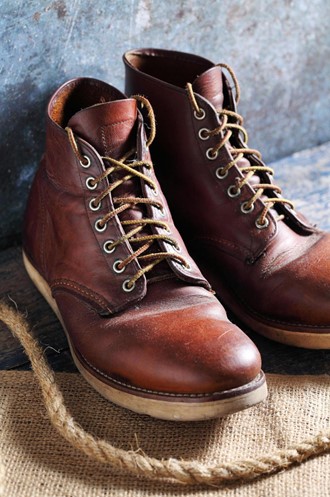
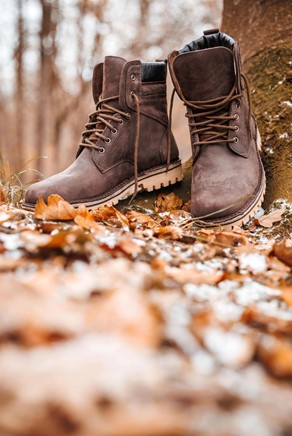
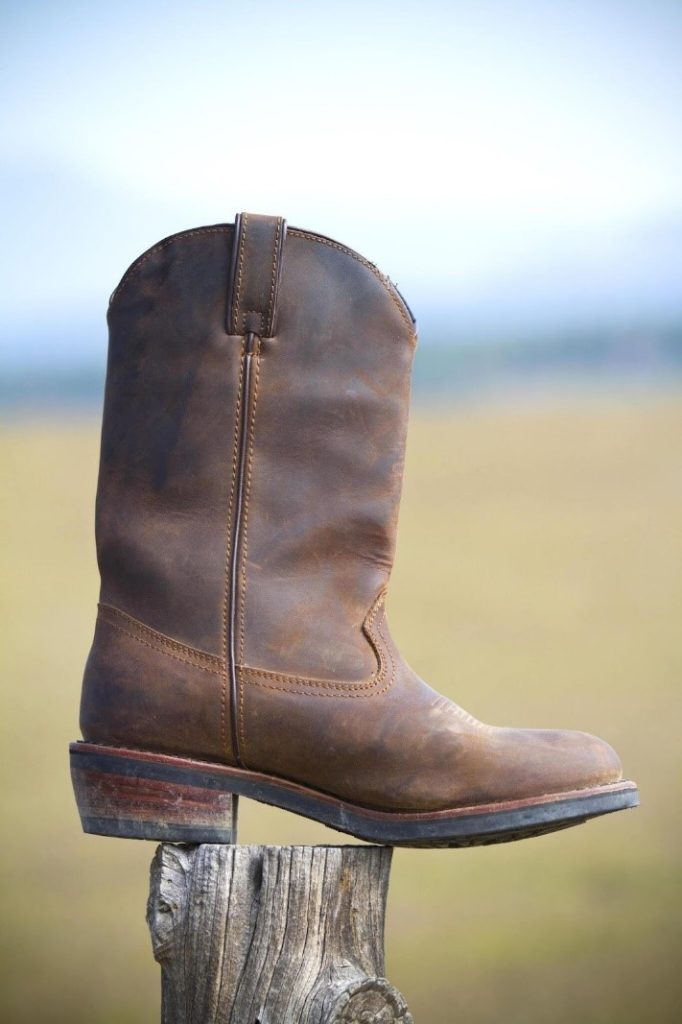
Different Types of Leather Grain
When it comes to leather grain, there’s no one-size-fits-all approach. Here are some common types you might encounter:
Full Grain Leather
Full grain leather stands as the epitome of leather quality, preserving the natural grain pattern of the hide in its entirety. Renowned for its exceptional durability, it withstands the tests of time with grace, gaining character as it ages. Each crease, mark, and imperfection tells a story, contributing to its unique charm. With use and exposure, a stunning patina emerges, enhancing its aesthetic appeal and reflecting the journey it has embarked upon. As a testament to its superior craftsmanship and unmatched resilience, full grain leather remains a timeless choice for those who value both style and substance.
Top Grain Leather
Top grain leather undergoes a refining process where it’s lightly sanded to remove any blemishes, resulting in a sleeker surface. While maintaining high quality, it might not possess the rustic allure found in full grain leat.
Split Grain Leather
Split grain leather is derived from the lower layers of the hide and is often used in suede production. While not as durable as full grain leather, it offers a softer texture and is more budget-friendly.her. Despite this, its smooth appearance and durability still make it a favorable choice for various products.
The Making Process of Leather Grain Boots
Crafting leather grain boots is an intricate process that requires skill and precision. It begins with selecting the finest hides, which are then tanned and treated to enhance their durability and texture. Next, the leather is cut into various pieces and stitched together by skilled artisans to create the final product.
Selecting the Finest Hides
The journey of crafting leather grain boots starts with the selection of premium hides. Experienced craftsmen meticulously inspect each hide, looking for imperfections and blemishes that could affect the quality of the final product. Only the finest hides with the most consistent grain patterns are chosen for further processing.
Tanning and Treating the Leather
Once the hides have been selected, they undergo a rigorous tanning and treating process to enhance their durability and texture. This involves soaking the hides in a series of chemical solutions to remove any impurities and prepare them for tanning. Tannins derived from natural sources such as tree bark or plant extracts are then used to tan the hides, giving them their characteristic color and suppleness.
Cutting and Stitching Process
After the leather has been tanned and treated, it is carefully cut into various pieces according to the design of the boots. Skilled artisans use precision tools to ensure that each piece is cut to the exact specifications, minimizing waste and maximizing efficiency. Once the pieces have been cut, they are meticulously stitched together using traditional techniques passed down through generations.
Uses of Full Grain Leather
Full grain leather finds its place in a myriad of industries, from fashion to furniture. Its versatility and enduring quality make it the material of choice for creating timeless pieces that withstand the test of trends and time.
Fashion Accessories
From belts to wallets to handbags, full grain leather is a staple material in the world of fashion accessories. Its luxurious feel and exquisite appearance elevate any outfit, adding a touch of sophistication to your everyday style.
Furniture
Full grain leather furniture exudes elegance and comfort, making it a popular choice for high-end interiors. Sofas, armchairs, and ottomans crafted from full grain leather not only provide unparalleled comfort but also serve as statement pieces that elevate the aesthetic of any living space.
Footwear
Shoes and boots made from full grain leather offer unmatched durability and style. Whether you’re trekking through rugged terrain or strolling through city streets, full grain leather footwear provides the perfect blend of functionality and fashion, ensuring that you step out in confidence wherever you go.
Importance of Skilled Artisans
The craftsmanship of leather grain boots lies in the hands of skilled artisans who have spent years honing their craft. These artisans possess a deep understanding of leatherworking techniques and take pride in their ability to transform raw materials into works of art. Their attention to detail and dedication to quality ensure that each pair of boots meets the highest standards of excellence.
Quality Control Measures
Throughout the manufacturing process, strict quality control measures are implemented to maintain the integrity of the final product. Each pair of boots is carefully inspected at every stage of production to ensure that they meet the brand’s exacting standards. Any imperfections or defects are immediately addressed to ensure that only the finest quality boots are delivered to customers.
Artisanal Touches | Handcrafted Details
One of the hallmarks of leather grain boots is the attention to detail that goes into every pair. Skilled artisans add handcrafted touches such as intricate stitching, embossed designs, and decorative hardware to elevate the boots from functional footwear to works of art. These artisanal details not only enhance the aesthetic appeal of the boots but also reflect the pride and passion of the craftsmen who create them.
Incorporating Fashion and Functionality
While leather grain boots are steeped in tradition, they also embrace modern design sensibilities to meet the demands of today’s fashion-conscious consumers. Designers draw inspiration from a variety of sources, blending classic elements with contemporary trends to create boots that are both stylish and functional. From sleek ankle boots to rugged work boots, there is a style to suit every taste and occasion.
Sustainable Practices in Leather Production
As concerns about environmental sustainability continue to grow, many manufacturers are embracing eco-friendly practices in leather production. This includes sourcing hides from ethically raised animals, minimizing water and chemical usage during tanning, and implementing recycling programs to reduce waste. By prioritizing sustainability, leather grain boot manufacturers can reduce their environmental footprint while still delivering high-quality products to consumers.
Evolution of Leather Craftsmanship
Over the centuries, the art of leather craftsmanship has evolved and adapted to changing times and technologies. What was once a labor-intensive process done by hand has now been streamlined with the help of machinery and automation. However, many manufacturers still embrace traditional techniques and artisanal methods to preserve the authenticity and quality of their products.
Modern Trends in Leather Grain Boots
In recent years, leather grain boots have experienced a resurgence in popularity as consumers seek out high-quality, durable footwear that reflects their individual style. From classic designs with timeless appeal to bold, fashion-forward creations, there is a wide range of options available to suit every taste and budget. Whether worn with jeans and a t-shirt for a casual weekend look or paired with a suit for a more formal occasion, leather grain boots remain a versatile and essential wardrobe staple for men and women alike.
Benefits of Choosing Full Grain Leather
Longevity
One of the primary benefits of full grain leather is its exceptional longevity. Unlike synthetic materials or lower-quality leathers, full grain leather ages gracefully, becoming softer and more supple with time while retaining its structural integrity.
Unique Appearance
Each piece of full grain leather is imbued with its own unique characteristics, making it truly one-of-a-kind. From subtle variations in color to distinct grain patterns, full grain leather items exude authenticity and craftsmanship, adding a touch of luxury to your everyday life.
Environmental Friendliness
Full grain leather is a sustainable choice for conscientious consumers. By opting for products made from full grain leather, you’re investing in quality craftsmanship and timeless style, reducing the need for frequent replacements and minimizing environmental impact.
Maintenance Tips for Full Grain Leather
Proper care and maintenance are essential to prolonging the life of your full grain leather items and preserving their beauty for years to come. Follow these simple tips to keep your leather looking its best:
Cleaning
Regularly remove dirt and debris from your full grain leather items using a soft, damp cloth. Avoid harsh chemicals or abrasive cleaners, as they can damage the leather’s natural oils and finish.
Conditioning
To keep your full grain leather soft and supple, apply a high-quality leather conditioner regularly. This helps replenish the leather’s natural oils, preventing it from drying out and cracking over time.
Storage
When not in use, store your full grain leather items in a cool, dry place away from direct sunlight and moisture. Avoid storing them in plastic bags or containers, as this can trap moisture and lead to mold growth.
Common Misconceptions About Full Grain Leather
Despite its many virtues, full grain leather is often misunderstood. Let’s debunk some common misconceptions surrounding this superior leather grade:
Cost
While full grain leather may come with a higher price tag than other leather types, its exceptional quality and longevity make it a worthwhile investment. When you choose full grain leather, you’re investing in a piece that will last a lifetime, making it a cost-effective choice in the long run.
Maintenance Difficulty
Some people may shy away from full grain leather boots due to perceived maintenance challenges. However, with proper care and occasional conditioning, full grain leather items can maintain their beauty and integrity for decades, requiring minimal effort on your part.
Full grain leather is the epitome of luxury and quality in the leather industry. Its exceptional durability, natural markings, and beautiful patina set it apart from other types of leather. Whether you’re in the market for a durable leather bag, a stylish pair of shoes, or a timeless piece of furniture, full grain leather offers unmatched quality and craftsmanship. By investing in full grain leather products, you’re not just purchasing an item; you’re investing in a piece of craftsmanship that will last a lifetime.
FAQs
To clean leather grain boots, simply wipe them down with a damp cloth and apply a leather conditioner to keep them looking their best.
While leather grain boots offer some level of water resistance, it’s always a good idea to apply a waterproofing spray for added protection.
Absolutely! Leather grain boots are versatile enough to be worn year-round, providing both style and comfort in any season.
To break in new leather grain boots, wear them around the house with thick socks to stretch them out gradually. You can also use a leather conditioner to soften the leather.
It depends on the brand and their sourcing and production practices. Look for brands that prioritize sustainability and ethical practices when purchasing leather grain boots.
